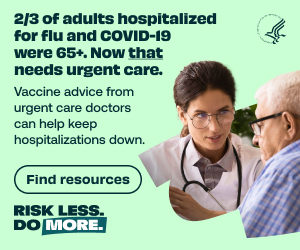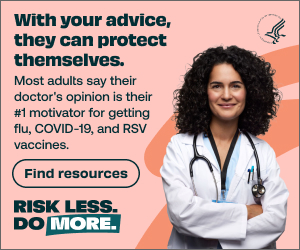In the name of high quality, cost-conscious care, ACEP has revised its stance on the Choosing Wisely campaign, voting to join the initiative in the fight against low value care.
In the name of high quality, cost-conscious care, ACEP has revised its stance on the Choosing Wisely campaign, voting to join the initiative in the fight against low value care.
Open up the journal JAMA in Spring 2013, and you probably wouldn’t be shocked to read the following passage:
“…with medical costs accounting for a large proportion of the gross national product, there are demands to keep costs down while increasing quality…High-cost laboratory tests, x-rays, medications, and supplies were the focus of a voluntary cost-containment effort initiated in a community hospital emergency department.”
You might be surprised to learn that this passage was not published in 2013, but in 19801. In the article, Dr. Stephen Karas Jr. used a “microcomputer” to identify the 100 most frequently charged items in his ED. Using education and provider feedback, he reduced lab and radiology charges by 10%, saving patients 3.3% off their ED bills.
For those old enough to remember the last time that cost-containment in medicine was in vogue, the often-asked question is: Why is today’s cost debate different than the 1990s when managed care was the savior of U.S. medicine, or previous decades?
The answer is that several forces make this time unique. First, the imperative to reduce costs is greater than ever before. Between the retirement of the baby boomers and expansion of insurance coverage with the Affordable Care Act, there will be many, many more people who will need healthcare in the coming years. Yet there is no appetite for higher premiums by employers, and the ability of politicians to raise taxes indefinitely to pay for spiraling bills has ended – as recently evidenced by the federal government’s sequester.
Faced with more patients and flat (or decreasing) funds, providers and healthcare institutions will experience a whole new level of pressure to deliver care for lower costs, or potentially face draconian measures such as price controls or more dramatic cost-shifting to patients.
So what is organized emergency medicine doing about this? Actually, quite a lot. The American College of Emergency Physicians (ACEP) has started several initiatives to promote cost-effective care. Over the last eight months, ACEP has chartered a taskforce to develop recommendations. The taskforce began with an open survey of members soliciting ideas. In more than 150 responses, there were hundreds of specific actions that emergency physicians could take to reduce costs without harming quality.
Examples of individual actions were “not ordering brain natiuretic peptide (BNP) on patients with a clear clinical diagnosis of heart failure or previously elevated levels.” ED actions included interactions with other services, such as “not ordering routine pre-operative chest X-rays,” or “engaging palliative care for appropriate patients while in the ED.” Several suggestions would require formal policy action by government, such as “not routinely bringing public intoxicants to the ED for medical evaluation,” or “waiving the three-day Medicare rule for skilled nursing facility coverage.”
A diverse panel was assembled to review all of the recommendations and prioritize them based on their potential to reduce costs, benefit or harm patients, and actionability by emergency providers. After multiple rounds of review and revision, a large number of items remained that the panel supported.
The ACEP Board of Directors reviewed the recommendations and this ultimately led to their reconsidering the decision to not to join the Choosing Wisely campaign. Ultimately, they reversed the decision and decided to join the over 35 specialty societies involved in the campaign.
While the final Choosing Wisely “list” is still being developed and won’t be public until later this spring, when you see it, you probably won’t be too surprised. Many of the items are common sense, evidence-based practices that could improve care, reduce costs and make ED care safer. While some emergency providers are always practicing in a cost-conscious way, there is good evidence to suggest that all of us can probably do a little better.
What does this mean for you, the practicing emergency physician? As it is becoming part of our professional responsibility to be good stewards of health care dollars, we need to start working on how to make cost containment part of our daily work.
Some general considerations:
1. The Link Between (Over)testing and Length of Stay
Pressure to reduce length of stay can contribute to over testing, as ordering a wide panels of tests after a brief triage evaluation is generally thought to be quicker than ordering a small number of tests and adding on tests sequentially. But think again: indiscriminately adding extra tests that take a long time can be counterproductive. Ordering a marginal CT or lab test can add hours to a patients’ length of stay. By spending a bit more time carefully considering tests and using evidence-based clinical decision rules, we may actually help unclog our EDs.
2. The Paradox of Patient Satisfaction
On one hand, we are told to do less for patients; on the other hand we are told – even compelled – to make patients happy. Yet sometimes patients want us to order ankle X-rays when the Ottawa Ankle Rules say they have a sprain. Or they want a prescription for antibiotics for viral upper respiratory infections. While some patients will not be satisfied unless they get the test or treatment they want, what most patients want are careful exams and clear explanations: it is possible to talk most patients down off the cliff. Note to policymakers: it is equally important to understand this daily trade off and to not penalize us for taking the time to talk to patients and providing good, cost-conscious care.
3. Avoid Being the Vector for Low-Value Care
Some low value services come at the request of a primary care provider or an admitting physician. We need our EDs to work with the hospital and these services to implement evidence-based protocols, so you don’t have to order that meaningless pre-op chest x-ray, or coags in a healthy 22 year-old. But for the over 80% of ED patients nationwide who are discharged after their visit, we are largely responsible for the costs of their emergency care.
4. Don’t Wait for Liability Reform:
While this is a real issue, comprehensive federal medical liability reform in the near future is unlikely. Waiting for such reforms as a prerequisite for trying to reduce cost could leave us in the dust if today’s focus on cost-containment is truly here to stay. If we don’t define value in emergency medicine, the insurers, other specialties and government will. We need to control our destiny, not wait for it to happen to us.
To bring this back to where Dr. Karas was in 1980, the first thing we can do to make emergency care more cost-effective is to start locally. It is about changing the culture of U.S. medicine from the inside out, and that starts in our local EDs at the bedside.
Jeremiah Schuur, MD is the Co-Chair of ACEP’s Cost-Effective Care Taskforce, Chief of the Division of Health Policy Translation in the Department of EM at Brigham and Women’s Hospital, and an Assistant Professor of Emergency Medicine at Harvard Medical School
Jesse M. Pines, MD is a member of ACEP’s Cost-Effective Care Taskforce, the Director of the Center for Health Care Quality, and an associate professor of EM and Health Policy at George Washington University.
References
1. Karas S Jr. Cost containment in emergency medicine. JAMA. 1980;243(13):1356-9.









1 Comment
I am always amused when I hear the topic of cost reduction presented to physicians such as this article. The costs are excessive not because of over utilization, but due to the exorbitant amount it costs to have the tests performed. A CT costing $3000, an IV medication costing $950, a CBC costing $75. I am sorry, but the cost of health care is not due to excessive ordering, but to the artificial prices set on testing. Don’t understand yet; if pencils were only produced by a few makers who charged $50 per pencil, would we complain education costs too much and put the blame on teachers for using way too many pencils? If the airport screening costs $1000 per patient, would we blame the agents for spending a lot of money by screening too many people? Do the right thing people. Reduce costs by ending this rigged pyramid scheme.